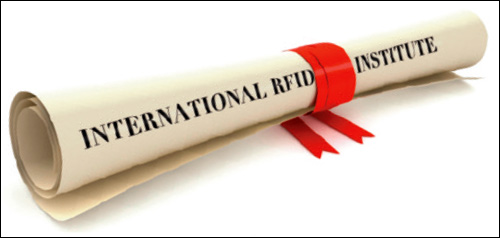Apple is the most successful technology company on the planet. Today, its stock is valued at $643 (adjusting for a recent 7-to-1 split)—down from a peak of $700 in 2012)—and it boasts a market capitalization of $500 billion. Apple has become the “gorilla”—the dominant technology provider—in MP3 players, smartphones and tablets. It is rare for a tech company to dominate any one market, and no other company has done it three times. So as RFID companies seek to foster widespread adoption of their products, it’s worth looking at Apple to learn a few lessons.
1) Build the Whole Product
The first MP3 player was introduced in 1997. At the time, consumers needed to purchase a CD-ROM ripper that could copy songs from a music CD to a computer. They had to purchase software to organize songs and copy them to an MP3 player, and they had to purchase the MP3 player itself. This was too complicated for most consumers, so by 2001, sales of MP3 players had reached just 750,000 units.
Around 2000, three years after returning to Apple, Steve Jobs surveyed the field of MP3 players and found most either “big and clunky” or “small and useless.” He created a team to develop a new MP3 player. At the same time, Apple acquired a company called SoundJam MP, which offered software that ran on Apple Macintosh computers and allowed people to manage digital music and copy songs to MP3 players. Apple improved the SoundJam user interface and added the ability to write to CD-ROMs. The software was released as iTunes in 2001, and the iPod was released later that year.
Sales of MP3 players jumped to 1.6 million units in 2002. Two years later, sales had more than doubled, and by 2007, sales of MP3 players, dominated by iPods, topped more than 150 million units. Apple’s iPod sales peaked in the first quarter of 2011, at just less than 20 million units.
The whole product is important because it reduces risk. For nontechnical consumers—the vast majority of us—having to buy a CD-ROM ripper, software and an MP3 player and get them all to work together means subjecting ourselves to risk. What if we can’t figure out how to write songs to the MP3 player? Then, we’ve wasted a lot of money.
Risk is a huge barrier to adoption of RFID technology. What if we buy a lot of tags and readers, purchase expensive software and hire an integrator, and some or all of it doesn’t work as advertised? Then, we’ve wasted a lot of money. Offering a whole product helps ensure the system will work and, therefore, reduces risk.
There have been many acquisitions in the RFID industry, but none have been similar to Apple’s acquisition of SoundJam, geared toward creating a whole product. But a few recent partnerships are aimed in that direction. Checkpoint Systems announced a strategic partnership with Mojix that could enable the two companies to offer retailers overhead readers, software, and deployment and systems integration services (see Checkpoint Partners With Mojix to Offer Passive RTLS in Stores). Alien Technology, RFID Global Solution and Xerafy recently came together to offer hardware, software and services for tracking medical instruments (see RFID News Roundup: Xerafy, RFID Global Solution, Alien Technology Partner on RFID Kit for Hospitals).
2) Make Products Easy to Use
Steve Jobs was not an engineer. He had limited technical skills and was not a proficient software coder. But Jobs understood his customers and what they wanted. He understood they wanted the technology to work, and they didn’t want to spend hours making it work. When Jobs saw the original graphical user interface developed at Xerox Palo Alto Research Center (Xerox PARC), he knew immediately it would appeal to consumers more than the text-based commands then used by all computers.

In Walter Isaacson’s biography Steve Jobs, Jobs recounts the story of a friend who took his iPad to Africa. He gave the iPad to children in a poor area who had never seen a computer, and within a few minutes they had figured out how to use the device. This gave Jobs enormous satisfaction.
RFID systems are still too difficult to use. A nontechnical person cannot easily set up a reader portal and begin reading tags. It’s true that tags and readers have improved tremendously. Readers are more sensitive—they can pick up fainter signals from tags. Tags can be orientation insensitive—they can be read regardless of their orientation to the reader antenna. Tags also have many new features, including security and privacy capabilities. But ask any businessperson to reduce the power output of the reader antenna on a passive ultrahigh-frequency reader and you will witness an exercise in frustration.
Last year, we were working with a company on a project that involved coding tags. The reader manufacturer walked me through the process of writing data to the tags. When I tried on my own, I could not figure out how he had done it. I had to call him again to walk me through it. When I still had problems, he had one of his engineers do it for me.
Many of the smaller RFID companies are led by the engineers who developed the products. They make great products that often do more than the end user really needs, and they tend to resist any effort to simplify their products because they see this as a “dumbing down.” But no technology can achieve mass adoption if it requires lots of highly skilled engineers to deploy it.
3) Market Aggressively
Jobs was well-recognized for his intuitive understanding of consumers and what technology they will and won’t buy. But Jobs was also a brilliant marketer. Apple’s 1984 Super Bowl commercial introducing the Macintosh computer is still considered by many to be the best TV ad ever made.
Within a year of the iPod’s launch, there were limited-edition models featuring the engraved signatures of Madonna, skateboard star Tony Hawk and singer-songwriter Beck. The goal was to make the iPod hip.
Jobs also approved an advertising campaign that consisted of humans silhouetted against brightly colored backgrounds, enjoying music through white earbuds attached to white iPods. There was almost no text in the ads—just the Apple logo and the word “iPod.” These ads conveyed “cool”; they became iconic. Jobs, who initially resisted the ads, according to Isaacson’s biography, backed them up with an aggressive budget.
Apple’s advertising budget for all products in 2002 was $125 million. Jobs realized the popularity of the iPod could drive sales of Macintosh computers (a Windows version of iTunes did not come out until the following year). So he decided to shift advertising dollars away from computer products to the iPod.
“I moved $75 million of advertising money to the iPod, even though the category didn’t justify one hundredth of that,” Jobs is quoted as saying. “That meant that we completely dominated the [advertising] market for music players. We outspent everybody by a factor of about a hundred.”
By contrast, most RFID companies spend nothing on advertising. They invest a lot of money in developing new products, but often leave no resources for promoting the new products. As a result, many end users who could use those products don’t know they exist.
Small companies will argue they simply don’t have the money to invest in advertising and when adoption picks up, they will be able to spend more. But adoption can’t pick up if no one knows what technology is available and who makes it.
When Steve Jobs took over Apple, the company was struggling and Jobs was only brought back in a desperate attempt to save the company (its share of the PC market had fallen from 10 percent to roughly 4 percent, and it was losing money). Apple did not have unlimited resources to develop the iPod and iMac and to promote them. When Jobs came in, he slashed the number of products Apple was selling and focused on a few that had promise.
There is no single business formula that will be successful for all companies, but Apple has done many things right since 1997. It seems clear that if RFID vendors partner with or acquire other companies to deliver the whole product, make their products easier to use and market them to a targeted group, they would grow sales significantly and the overall demand for RFID solutions would soar.


